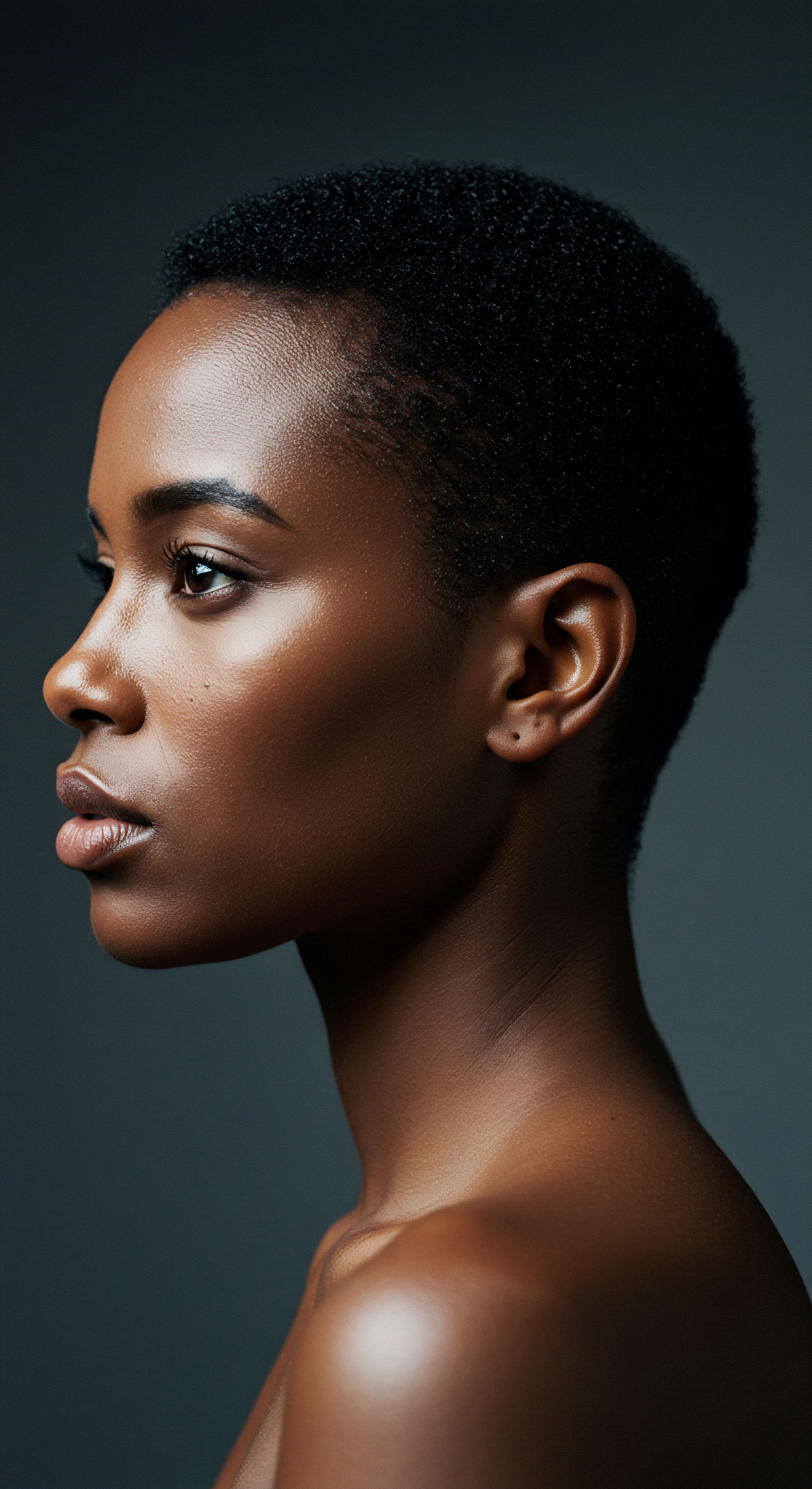
Roots
The quiet hum of our hair, a constant companion through every waking moment and restful night, holds more stories than we often pause to consider. It is a living extension, shaped by ancestry, environment, and the very hands that tend to it. To truly understand its needs, its whispers, we must first look to its foundations.
The texture gracing one’s head is not a simple descriptor; it serves as a profound guide, dictating how moisture moves, how products interact, and the very practices that allow it to flourish. This journey into modern hair care begins with acknowledging the inherent structure, the cellular blueprints that make each strand distinctly its own.
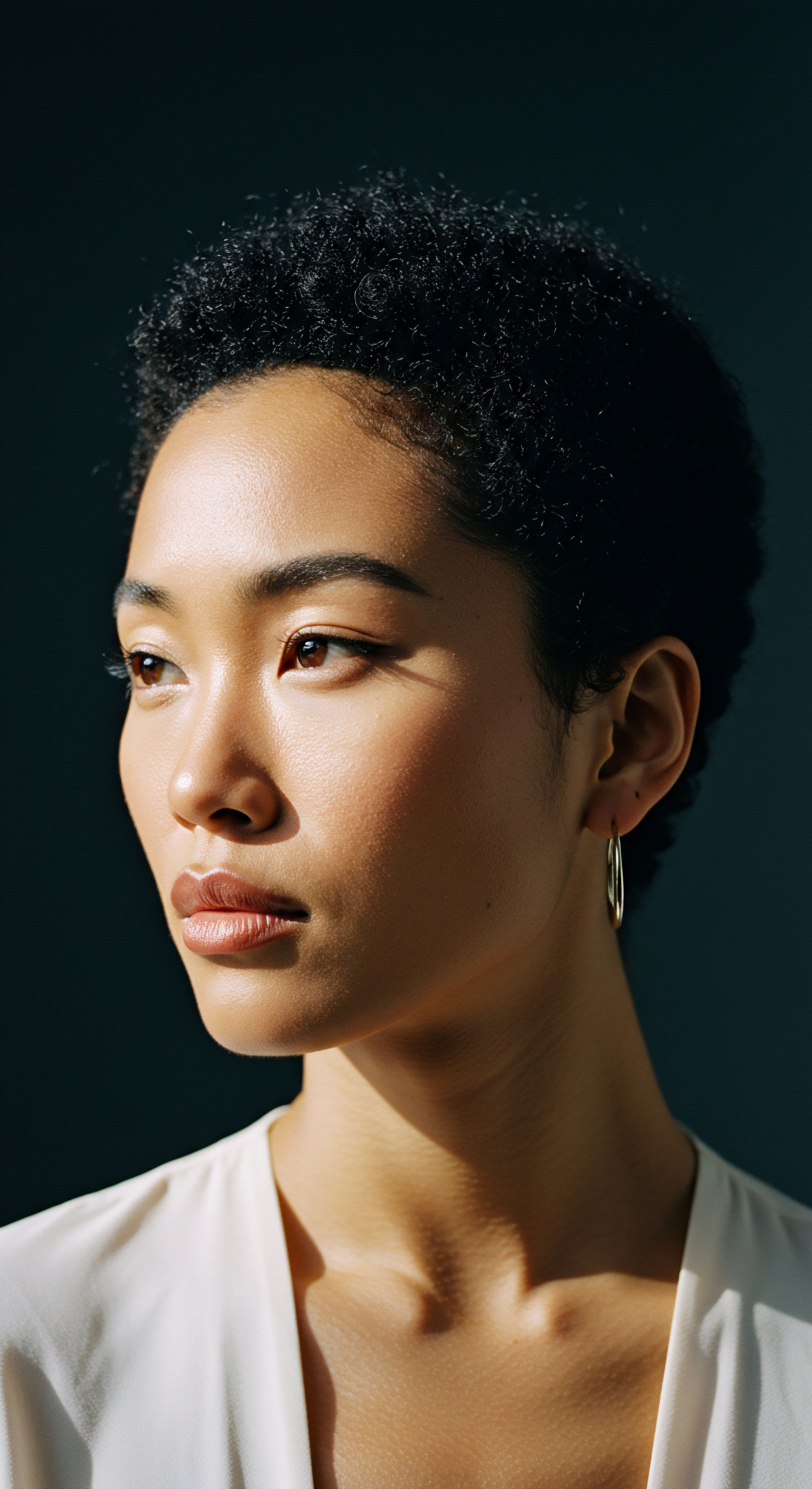
Hair Anatomy and Physiology Specific to Textured Hair
The human hair shaft, at its core, shares a common architecture ❉ a cuticle, cortex, and sometimes a medulla. Yet, beneath this universal design, significant differences emerge when examining textured hair. Unlike the generally round cross-section of straight hair, highly coiled strands often exhibit an elliptical or flattened shape. This structural distinction influences everything from light reflection, giving textured hair its characteristic soft glow, to its mechanical properties.
The bends and twists along a curly or coily strand mean natural oils from the scalp find it challenging to travel the entire length, often leaving the ends feeling drier than other hair types. This inherent characteristic points to a deeper need for external moisture sources in daily regimens.
Consider the cuticle, the outermost protective layer, akin to overlapping shingles on a roof. In textured hair, these cuticles tend to be more raised and open, particularly at the curves of the strand. This openness, while contributing to a unique aesthetic, also means a greater susceptibility to moisture loss and external aggressors. The cortex, the inner strength of the hair, composed of keratin proteins, also varies.
African hair, for instance, has a higher density of disulfide bonds, which contribute to its tight curl patterns. These bonds, while providing structure, also make the hair more prone to breakage under mechanical stress, a subtle yet significant difference from straighter hair types.
The intrinsic structure of each hair strand, from its cross-section to its cuticle arrangement, fundamentally shapes its needs and how it responds to care.
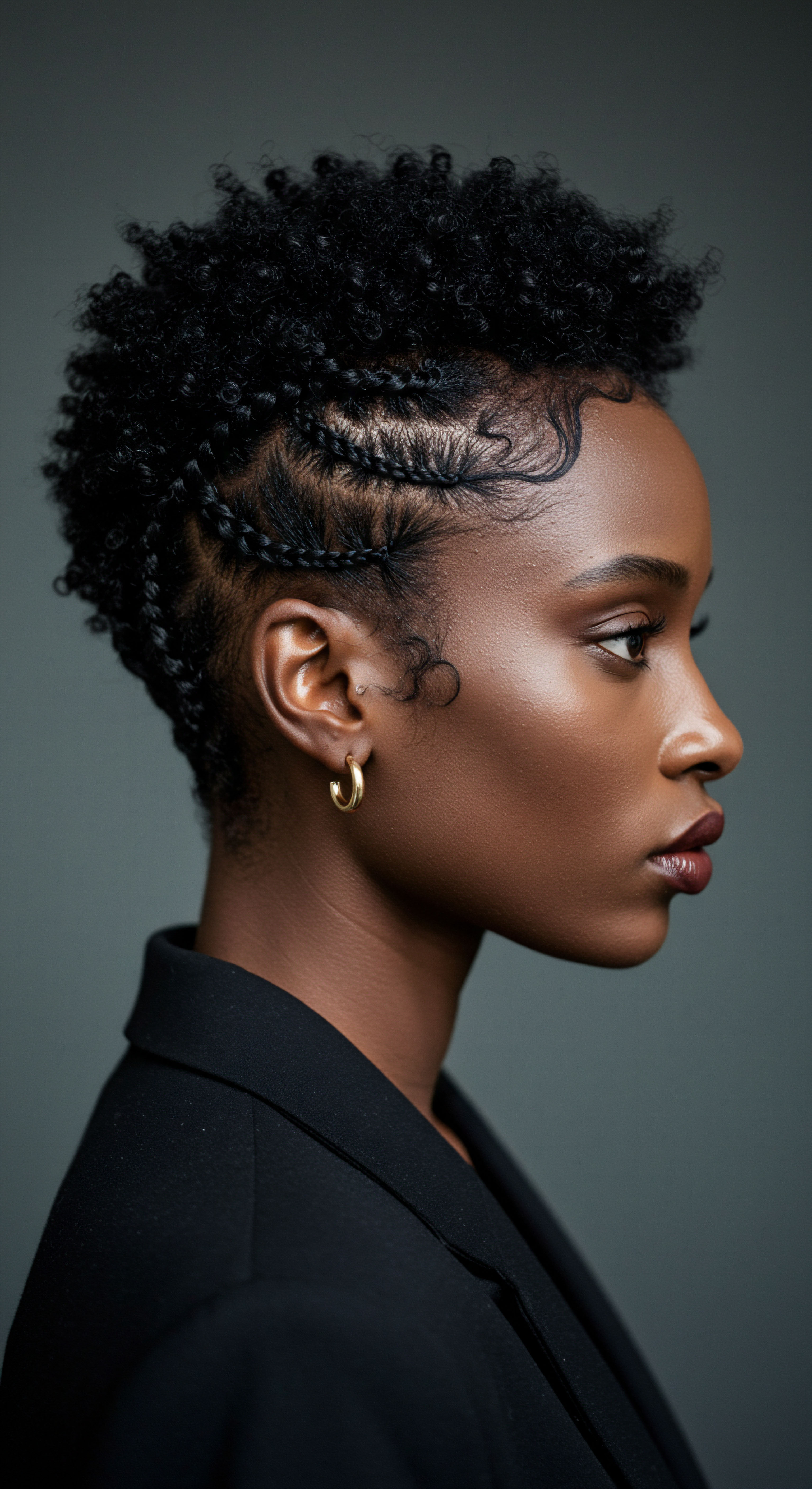
Textured Hair Classification Systems
For many years, the classification of hair textures has been a way to categorize and understand the vast spectrum of curls, coils, and waves. While no system fully captures the individual variation, the Andre Walker Typing System, ranging from Type 1 (straight) to Type 4 (coily), with subcategories A, B, and C, has become a common reference.
- Type 1 hair ❉ Possesses no natural curl.
- Type 2 hair ❉ Displays a wave pattern, ranging from a gentle S-shape (2A) to more defined waves (2B, 2C).
- Type 3 hair ❉ Exhibits distinct curls, from loose spirals (3A) to tight, bouncy curls (3C).
- Type 4 hair ❉ Characterized by tight coils and zig-zag patterns, from loosely packed coils (4A) to very dense, small coils (4C).
Each type and sub-type presents a unique set of care considerations. A Type 4C coil, for example, with its dense, tightly packed pattern, experiences moisture retention challenges differently than a Type 2A wave. This classification aids in identifying general needs, guiding individuals toward products and techniques that align with their hair’s physical characteristics.

The Essential Lexicon of Textured Hair
A common vocabulary allows for a clearer dialogue about hair. Terms like ‘porosity,’ ‘density,’ and ‘elasticity’ describe vital aspects of hair health and behavior.
- Porosity ❉ Refers to the hair’s ability to absorb and hold moisture. Low porosity hair, with tightly closed cuticles, resists water but holds it well once absorbed. High porosity hair, with open cuticles, absorbs water quickly but loses it just as fast.
- Density ❉ Describes the number of individual hair strands on one’s scalp. High density hair requires more product and often takes longer to dry.
- Elasticity ❉ Is the hair’s ability to stretch and return to its original state without breaking. Good elasticity indicates healthy, well-hydrated hair.
Grasping these terms helps individuals decode their hair’s responses to products and styling, moving beyond generic advice to truly personalized care. For instance, someone with low porosity hair might find that heavier butters sit on their strands, while a lighter leave-in conditioner absorbs more readily.

Hair Growth Cycles and Influencing Factors
Hair growth proceeds through distinct phases ❉ anagen (growth), catagen (transition), and telogen (resting). While these cycles are universal, their duration can vary among different hair types and ethnicities. For instance, African hair typically has a shorter anagen phase compared to Asian or Caucasian hair, which contributes to its slower growth rate. This shorter growth phase, coupled with the fragility of coiled strands, means that practices minimizing breakage are paramount to retaining length.
Beyond genetics, numerous factors influence hair growth and health. Nutrition plays a significant part; a diet rich in vitamins, minerals, and proteins supports robust hair production. Stress, hormonal shifts, and certain medications can also disrupt the natural cycle, leading to shedding or thinning.
Environmental elements, such as humidity levels and pollution, also leave their mark, requiring adaptive care routines. Recognizing these influences helps us understand that hair care is not merely a superficial act but a response to complex biological and external interactions.
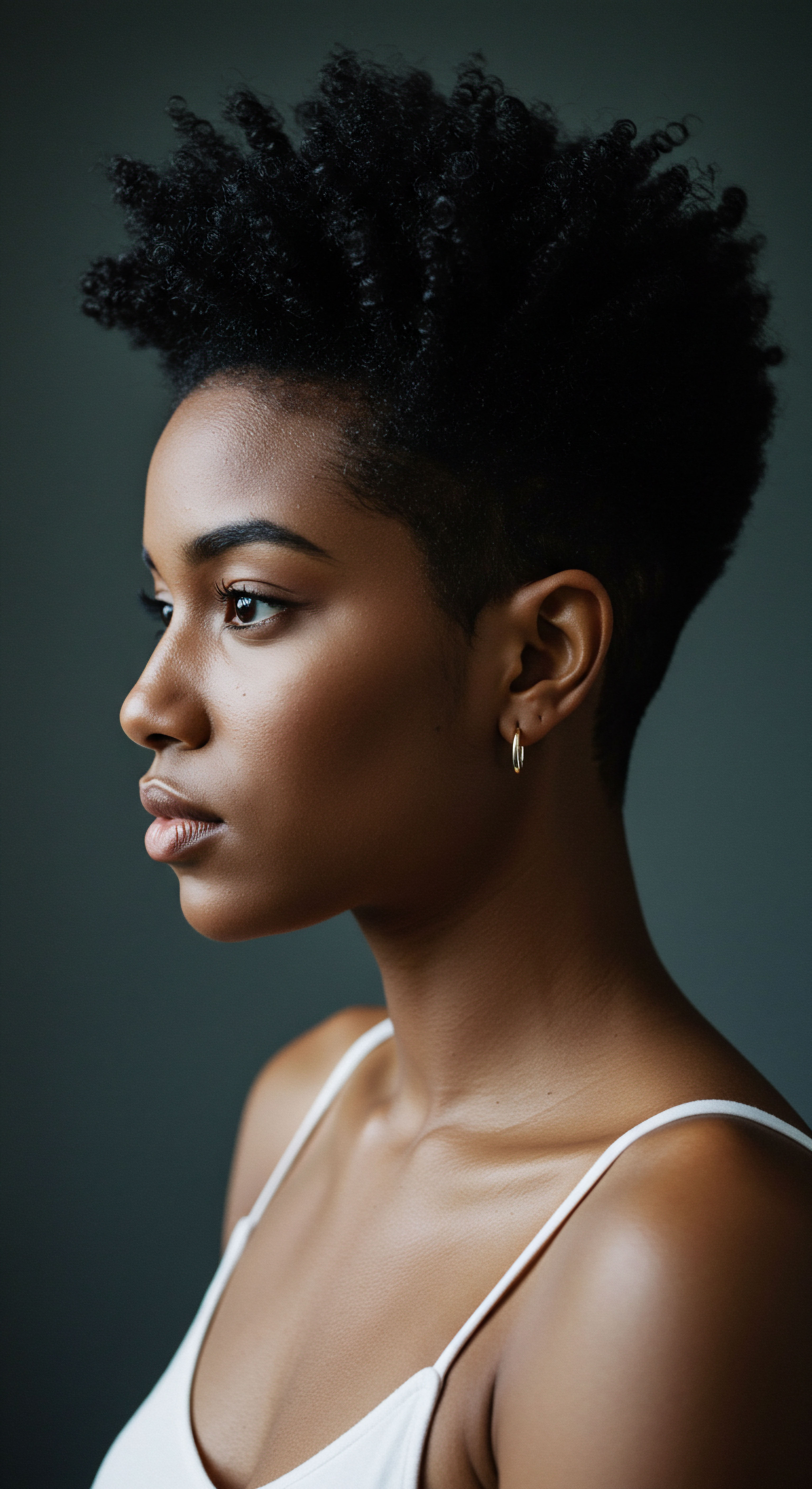
Ritual
Moving beyond the foundational understanding of hair’s inner workings, we step into the realm of daily practice, the rhythmic dance of care that shapes its outer appearance and inner strength. This section considers how hair type guides our hands, informing the techniques we choose, the tools we rely upon, and the transformations we seek. It is a space where practical wisdom meets the unique demands of each texture, creating a personalized pathway to healthy, vibrant strands. The choices we make, from the gentlest detangling to the most elaborate protective styles, are all reflections of our hair’s distinct requirements.

Protective Styling Encyclopedia
Protective styles serve as a shield, safeguarding delicate strands from daily manipulation, environmental exposure, and mechanical stress. For textured hair, which can be more prone to breakage due to its structural characteristics, these styles are not merely aesthetic choices but essential components of a health-conscious regimen. Braids, twists, buns, and cornrows, when installed without excessive tension, minimize tangling and allow for length retention by keeping ends tucked away.
The selection of a protective style should always consider the hair’s current condition and the specific texture. Loose, gentle twists may suit finer strands, while denser coils might support more intricate braided patterns. It is paramount to avoid styles that pull too tightly on the scalp, as chronic tension can lead to a form of hair loss known as Traction Alopecia.
This condition, unfortunately common in communities that favor tight braiding and chemical treatments, highlights the critical link between styling choices and long-term scalp well-being. The art of protective styling lies in finding the balance between aesthetic desire and the hair’s inherent needs for gentle handling.
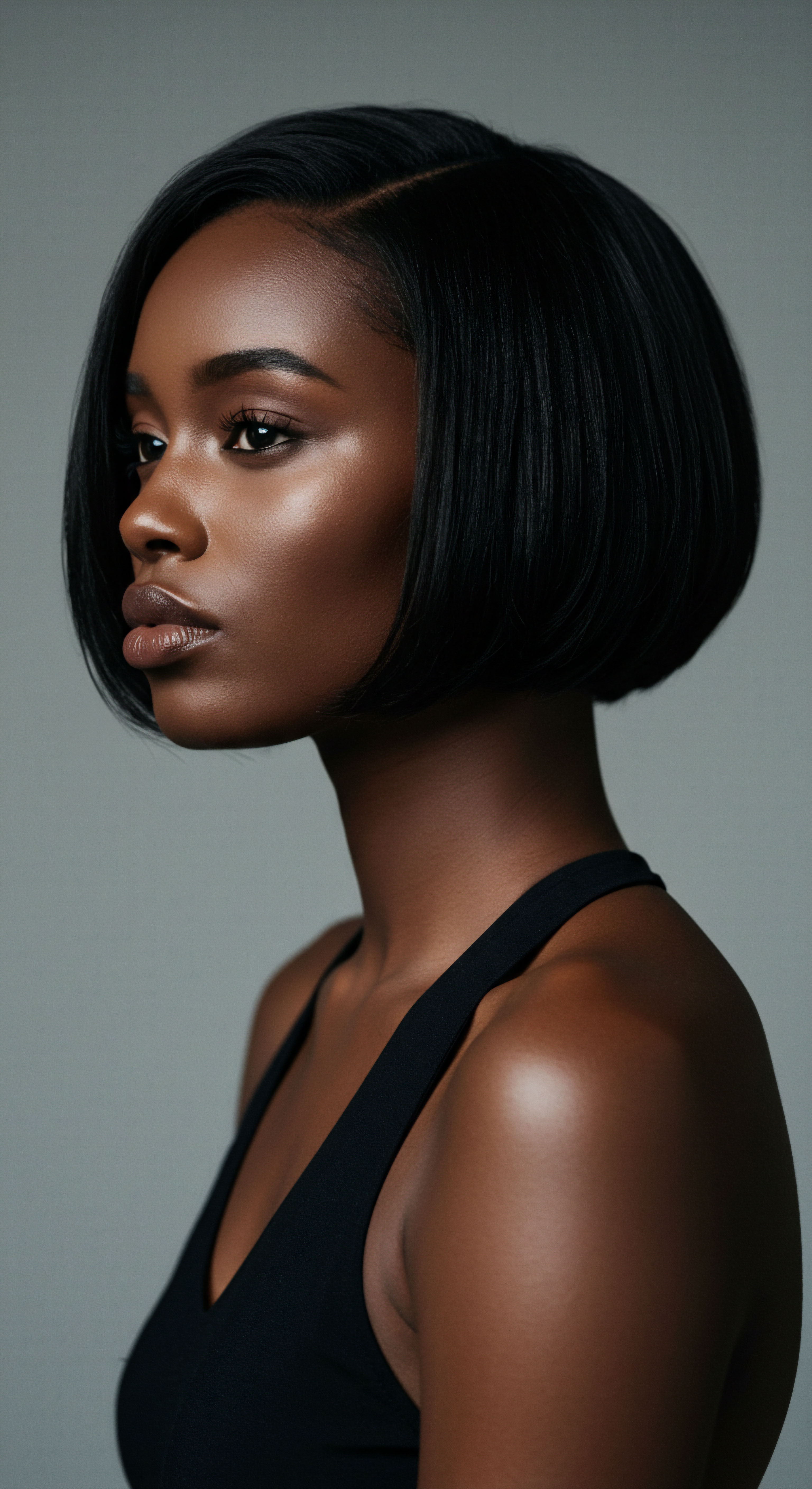
Natural Styling and Definition Techniques
Celebrating natural texture involves a suite of techniques designed to enhance curl definition, reduce frizz, and maintain moisture. For wavy hair, methods like scrunching with a light gel or mousse can coax out natural undulations. Curly patterns often benefit from finger coiling or the “shingling” method, where product is applied to small sections to clump curls. Coily hair, with its tighter spirals, often responds well to twist-outs or braid-outs, which elongate the coils while providing definition and minimizing shrinkage.
The effectiveness of these techniques is directly tied to the hair’s porosity and density. High porosity hair may require layering lighter products to avoid product build-up, while low porosity hair might benefit from applying products to damp, warm strands to aid absorption. The goal is to work with the hair’s natural inclinations, rather than against them, allowing its unique character to shine. Patience and observation are key companions in this process, as each head of hair offers its own subtle cues.
Styling choices are not merely aesthetic decisions; they are acts of care, deeply connected to a hair type’s unique requirements and vulnerabilities.

Wigs and Hair Extensions Mastery
Wigs and hair extensions offer versatility and an alternative form of protection for one’s natural hair. They allow for dramatic changes in appearance without direct manipulation of the underlying strands. However, their application and removal demand meticulous attention to prevent damage. For extensions, the method of attachment is paramount.
Sew-ins, tape-ins, or clip-ins each exert different levels of tension on the natural hair. It is essential that the natural hair is clean, moisturized, and properly braided or laid flat beneath the wig or extension to prevent matting and strain.
Maintenance of wigs and extensions also plays a significant part in safeguarding the natural hair underneath. Regular cleansing of the scalp, gentle drying, and allowing the scalp to breathe between installations are vital. Choosing breathable wig caps and avoiding excessive glue or adhesive use can also contribute to scalp health. The objective here is to ensure that while enjoying the versatility these options provide, the health of the natural hair remains the utmost priority.

Heat Styling and Thermal Reconditioning Safety First Approach
Heat styling, whether through blow dryers, flat irons, or curling wands, offers temporary alterations to hair texture. While appealing for its immediate results, it also carries the risk of thermal damage, especially for textured hair which can be more susceptible to heat-induced dryness and breakage. The intense heat can disrupt the cuticle layer, leading to increased porosity and a compromised protein structure.
A safety-first approach is non-negotiable. This involves using heat protectants, which form a barrier between the hair and the heat source, and selecting the lowest effective temperature setting on styling tools. Limiting the frequency of heat application and ensuring hair is thoroughly dry before flat ironing are also critical steps.
For processes like thermal reconditioning, which permanently alters the hair’s protein bonds, the expertise of a professional is indispensable. Such chemical alterations demand precise application and an understanding of the hair’s integrity to prevent irreversible damage.
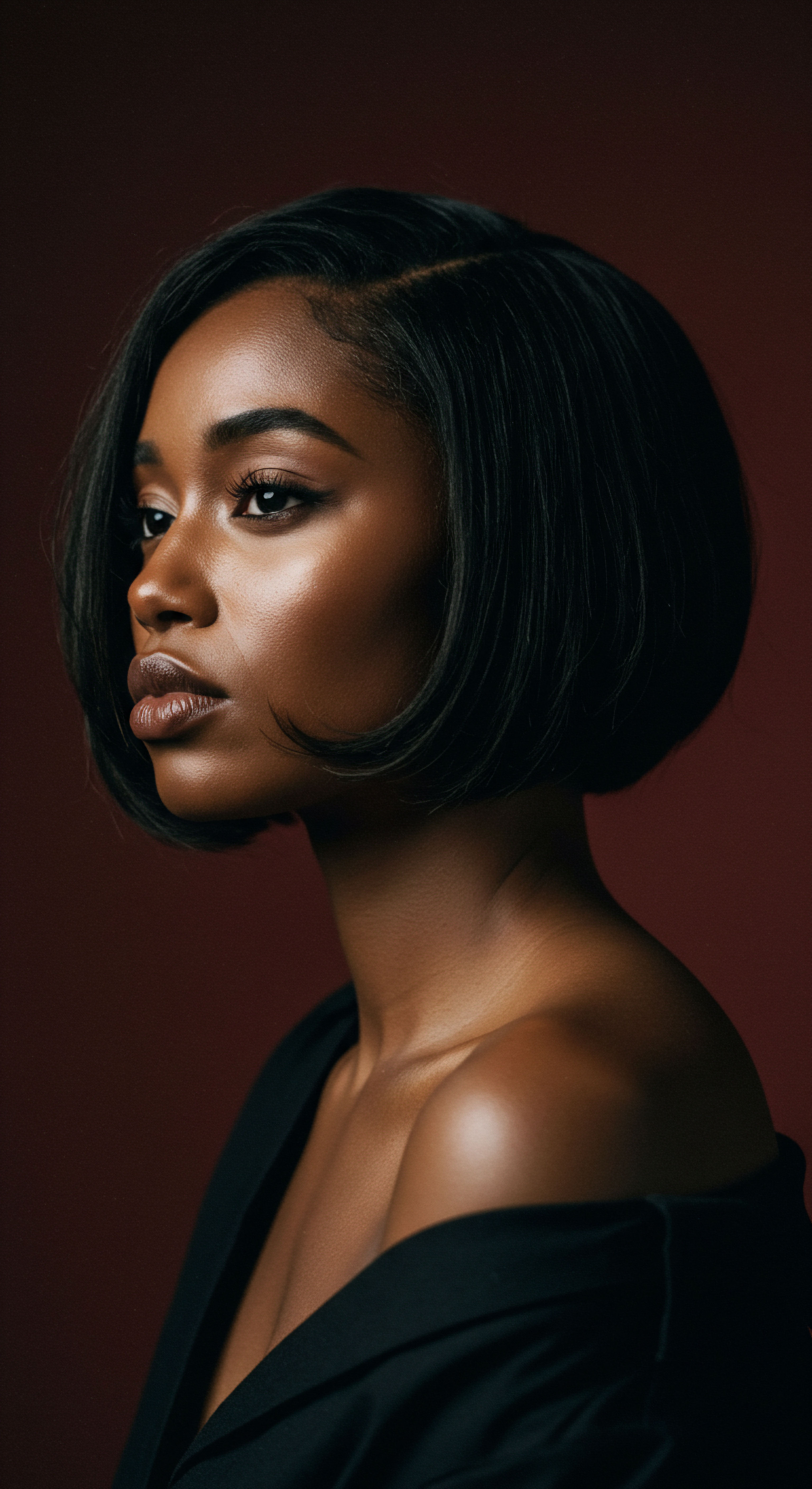
The Complete Textured Hair Toolkit
The right tools make all the difference in a care routine. For textured hair, wide-tooth combs, detangling brushes with flexible bristles, and microfiber towels are indispensable.
- Wide-Tooth Comb ❉ Gentle detangling, especially on wet, conditioned hair, minimizing breakage.
- Detangling Brush ❉ Designed to glide through knots without pulling, often with varying bristle lengths.
- Microfiber Towel ❉ Reduces friction and absorbs excess water without roughing up the cuticle, thereby lessening frizz.
- Satin or Silk Pillowcase ❉ Minimizes friction during sleep, protecting strands from snagging and preserving moisture.
- Spray Bottle ❉ Essential for re-wetting hair during styling or for refreshing curls between wash days.
These tools, when used thoughtfully, support the hair’s natural structure and contribute to its overall health, making the care process more efficient and effective. The selection of tools should align with the specific curl pattern and density, ensuring a gentle yet effective approach to daily care.

Relay
Stepping beyond the immediate rituals, we find ourselves at a deeper confluence, where the biological blueprint of hair meets the currents of society, history, and individual perception. What role does hair type play in modern care routines when viewed through this expansive lens? It is a complex interplay, a dialogue between science and culture, revealing how deeply ingrained societal norms can influence not only our practices but also the very products available to us. The care choices we make are not solely driven by a strand’s thirst for moisture or its desire for definition; they are often shaped by forces far beyond the bathroom mirror.
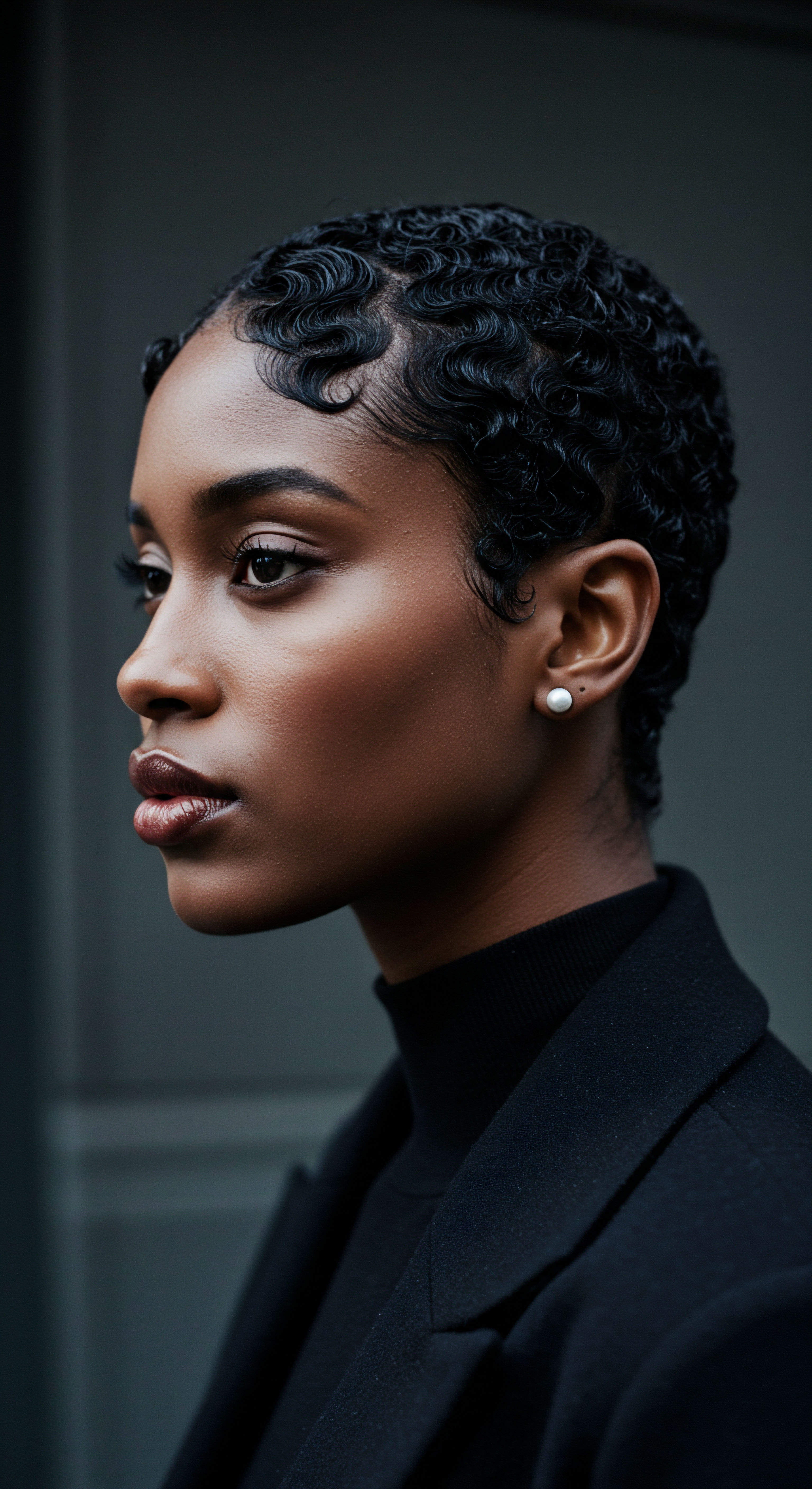
Societal Expectations and Hair Care Choices
The prevailing beauty standards within a society profoundly influence hair care routines. For centuries, Eurocentric ideals of beauty, often equating straight, smooth hair with professionalism and aesthetic appeal, have cast a long shadow over textured hair. This historical bias has compelled many individuals with curls and coils to alter their natural patterns through chemical relaxers or frequent heat styling, sometimes at considerable personal cost. These alterations, while offering temporary conformity, can lead to damage and a disconnect from one’s inherent hair identity.
A striking example of this societal pressure and its tangible impact comes from research on workplace perceptions. A study published in Social Psychological and Personality Science revealed that Black women with natural hairstyles, such as afros, braids, or twists, were often perceived as less professional and less likely to be recommended for interviews compared to Black women with straightened hair, particularly in industries with conservative appearance norms. This finding illuminates a profound reality ❉ for many, modern hair care routines are not just about biological health but about navigating a social landscape where one’s natural hair can affect professional opportunities.
The choice to straighten, then, becomes a coping mechanism against bias, a decision rooted in external pressures rather than intrinsic hair needs. This systemic bias forces care routines to extend beyond mere nourishment, becoming acts of self-preservation or conformity.

The Economics of Hair Type
The market for hair care products is vast, yet it has historically underserved textured hair, particularly Type 4. This disparity is not merely anecdotal; it is reflected in the availability of specialized products, research, and even pricing. Despite the significant spending power of consumers with textured hair, a “texture gap” persists, meaning that product innovation and tailored solutions lag behind demand.
Beyond availability, there is a tangible financial burden. A study investigating pricing bias in haircare products found that coily/curly hair products were significantly more expensive per ounce compared to products for straight hair types. This “minority hair tax” means that individuals with textured hair often pay more for the essential products their hair requires, adding an economic layer to their care routines.
This financial reality shapes purchasing decisions, sometimes forcing compromises on product quality or quantity, directly impacting hair health. The journey to healthy hair becomes not just a matter of knowledge and practice, but also one of economic accessibility.
| Hair Type Category Coily/Curly Hair Products |
| Average Price Per Ounce $0.66 |
| Hair Type Category Straight Hair Products |
| Average Price Per Ounce $0.46 |
| Hair Type Category Data indicates a significant pricing disparity, making care for textured hair more costly. |
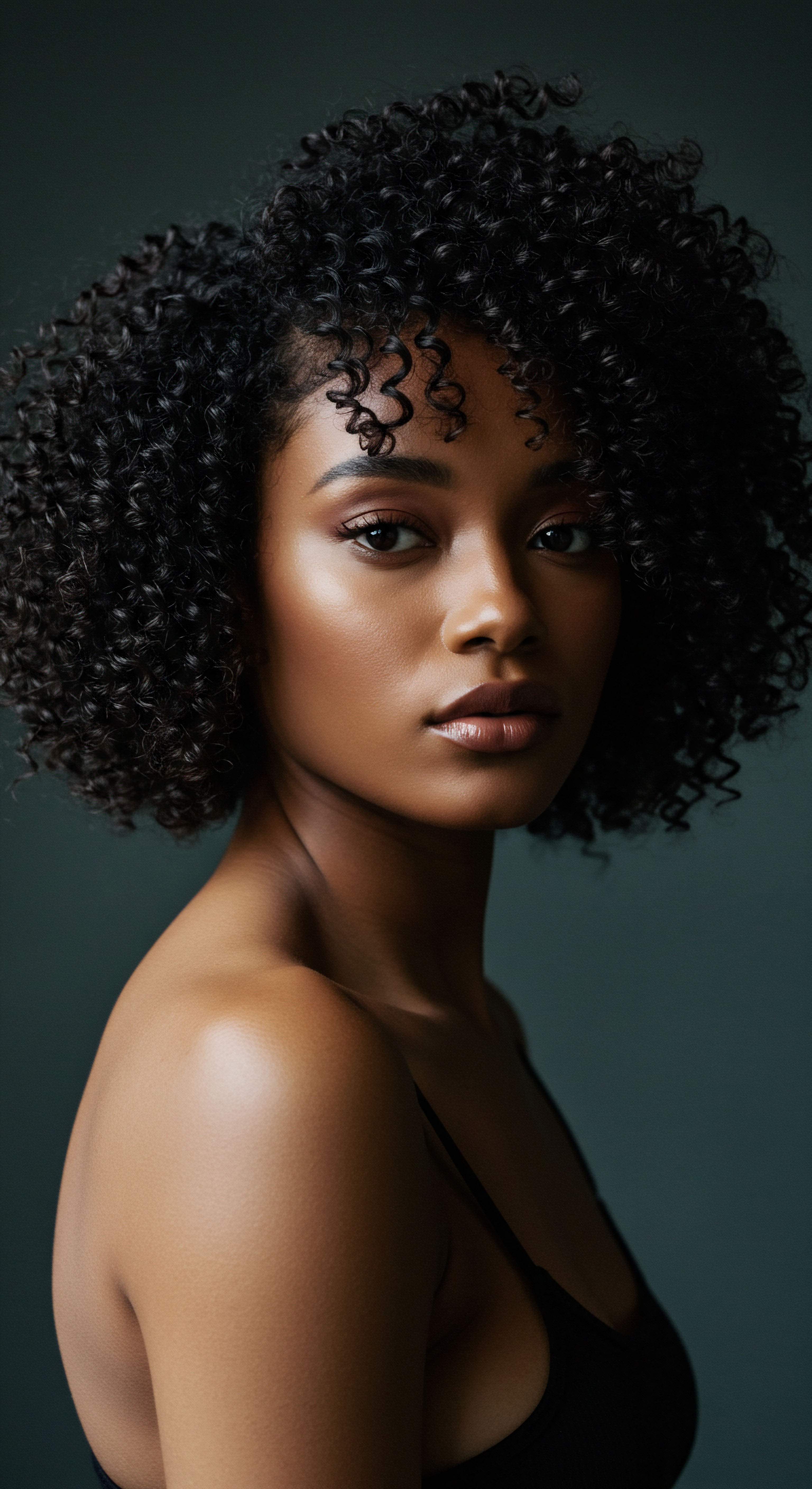
Environmental and Cultural Influences on Care
Hair care routines are not isolated from the world around us. Environmental factors, such as climate and humidity, directly influence how hair behaves and what it needs. Arid climates may necessitate richer moisturizers and sealants to combat dryness, while humid environments might call for products that resist frizz-inducing moisture. Travel, too, often prompts adjustments in routine as hair reacts to new water sources and atmospheric conditions.
Culturally, hair holds immense significance, often serving as a symbol of identity, heritage, and expression. Traditional practices, passed down through generations, form the bedrock of many modern care routines. The emphasis on oiling, braiding, or specific herbal treatments in various cultures speaks to a deep, ancestral knowledge of hair health. These cultural practices often stand in beautiful contrast to the generalized, mass-market approaches, reminding us that care is not a universal prescription but a personalized, culturally resonant endeavor.
The perception of hair, influenced by societal norms and economic realities, shapes care choices far beyond biological needs.

The Science of Product Efficacy Across Hair Types
Modern hair care science aims to formulate products that interact optimally with different hair structures. This involves understanding how ingredients penetrate the hair shaft, deposit on the surface, or affect the scalp. For instance, the unique characteristics of African hair, such as its higher lipid content and increased permeability compared to Asian and Caucasian hair, mean it responds differently to certain ingredients. Products designed for textured hair often feature humectants, emollients, and occlusives in specific ratios to address its tendency towards dryness and breakage.
Research continues to reveal subtle variations in hair’s chemical composition and physical properties across ethnic groups. Asian hair, known for its strength and large diameter, might benefit from different protein treatments than African hair, which is more prone to mechanical damage. The scientific pursuit is to move beyond a one-size-fits-all approach, crafting formulations that truly honor the distinct biology of each hair type, ensuring efficacy and minimizing adverse reactions. This scientific understanding is slowly but surely guiding the evolution of modern care routines, making them more precise and tailored.
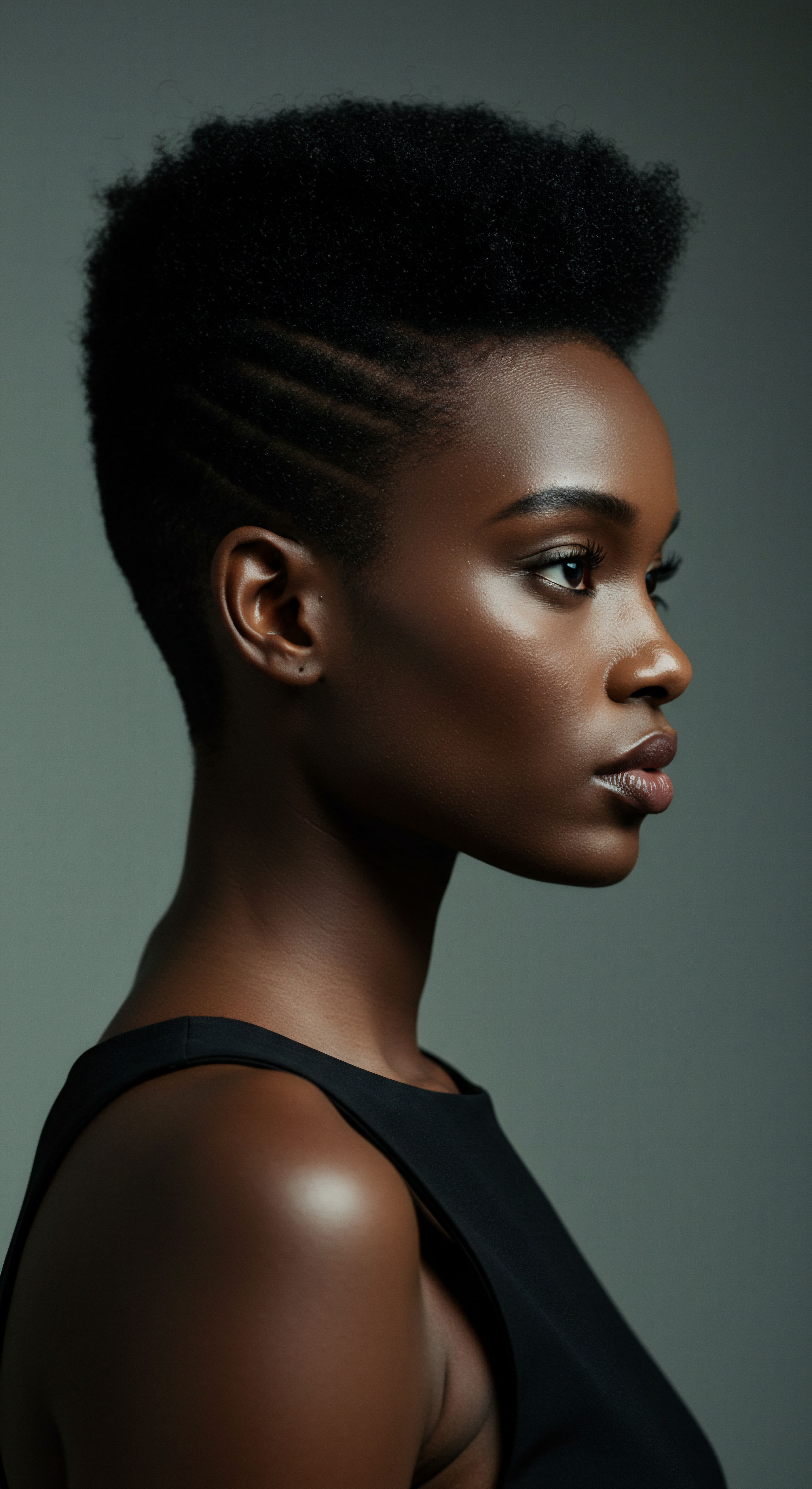
Reflection
Our hair, in its myriad forms, is a constant conversation. It speaks of our ancestry, our choices, and the world we inhabit. The path to serene, healthy strands is not a linear one, nor is it devoid of external influences.
It is a dialogue between understanding the unique language of one’s own hair type and navigating the broader currents of societal expectation and market realities. The journey of care becomes a continuous learning, a gentle attunement to what truly serves our hair, allowing it to exist in its most authentic, vibrant state.

References
- Koval, C. Z. & Rosette, A. S. (2020). The Natural Hair Bias in Job Recruitment. Social Psychological and Personality Science, 11(7), 1269-1277.
- Oliver, M. A. Coderch, L. Carrer, V. Barba, C. & Marti, M. (2020). Ethnic hair ❉ Thermoanalytical and spectroscopic differences. Skin Research and Technology, 26(2), 241-248.
- Goren, A. Wei, L. Tan, Y. Kovacevic, M. McCoy, J. & Lotti, T. (2018). Frontal pattern hair loss among Chinese women is frequently associated with ponytail hairstyle. Dermatology and Therapy, 8(4), 589-593.
- McKinsey & Company. (2022). The Black consumer in beauty ❉ A 360-degree view.
- Carra Labs. (2023). The Texture Gap Report.
- Woolford, S. J. et al. (2016). Perceived Barriers to Physical Activity in African American Adolescent Girls. Journal of School Health, 86(3), 209-215.
- Miteva, M. & Tosti, A. (2018). Traction alopecia ❉ the root of the problem. Clinical, Cosmetic and Investigational Dermatology, 11, 155–160.
- Miranda-Vilela, A. L. et al. (2019). The Genomic Variation in Textured Hair ❉ Implications in Developing a Holistic Hair Care Routine. Cosmetics, 6(4), 62.
- Akingbola, C. O. & Vyas, J. (2023). Traction Alopecia. StatPearls.
- Dube, L. M. et al. (2023). Prevalence and Associated Factors of Traction Alopecia in Women in North Sudan ❉ A Community-Based, Cross-Sectional Study. Cosmetics, 10(5), 118.
- Cheong, W. K. et al. (2024). Traction alopecia in women ❉ An under-recognised cause of hair loss. Annals of the Academy of Medicine, Singapore, 53(1), 1-6.
- Dawson, S. J. et al. (2019). Hair Bias in the Workplace ❉ A Critical Human Resource Development Perspective. Human Resource Development Review, 18(3), 390-408.
- Aguh, C. & Okoye, G. A. (Eds.). (2017). Fundamentals of ethnic hair ❉ the dermatologist’s perspective. Springer.
- Perception Institute. (2017). The “Good Hair” Study ❉ Explicit and Implicit Attitudes Toward Black Women’s Hair.
- Awad, G. H. et al. (2015). The impact of skin tone and hair texture on judgments of African American women. Journal of Black Psychology, 41(6), 539-556.